
Appendix B
Accounting Information Systems
Appendix B: Overview
The appendix introduces the student to accounting information systems (AIS) by identifying the
characteristics of an effective AIS—control, compatibility, flexibility, relevance, and positive cost/benefit
relationship. This first section concludes by detailing the three components of an accounting information
system—source documents and input devices, processing and storage, and outputs.
The next section of the chapter describes how sales and cash receipts are recorded in a manual system.
Included is a discussion of special journals, subsidiary ledgers, the sales journal, and the cash receipts
journal. The discussion then focuses on how purchases, cash payments, and other transactions are recorded
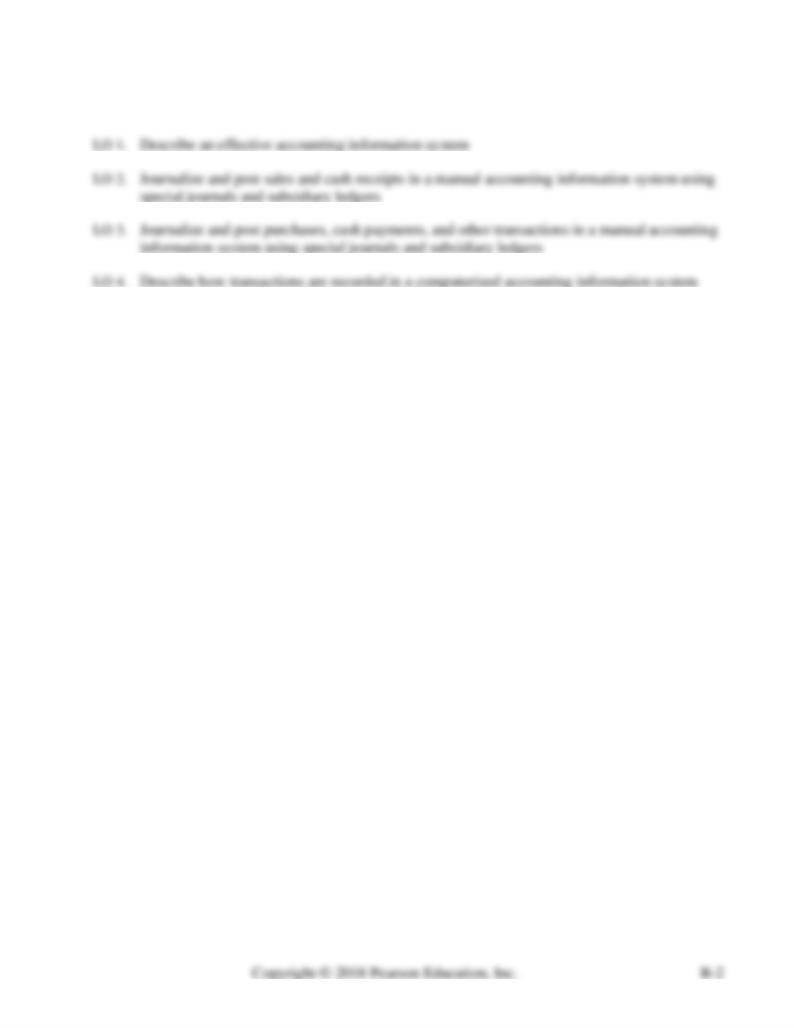
Appendix B: Learning Objectives
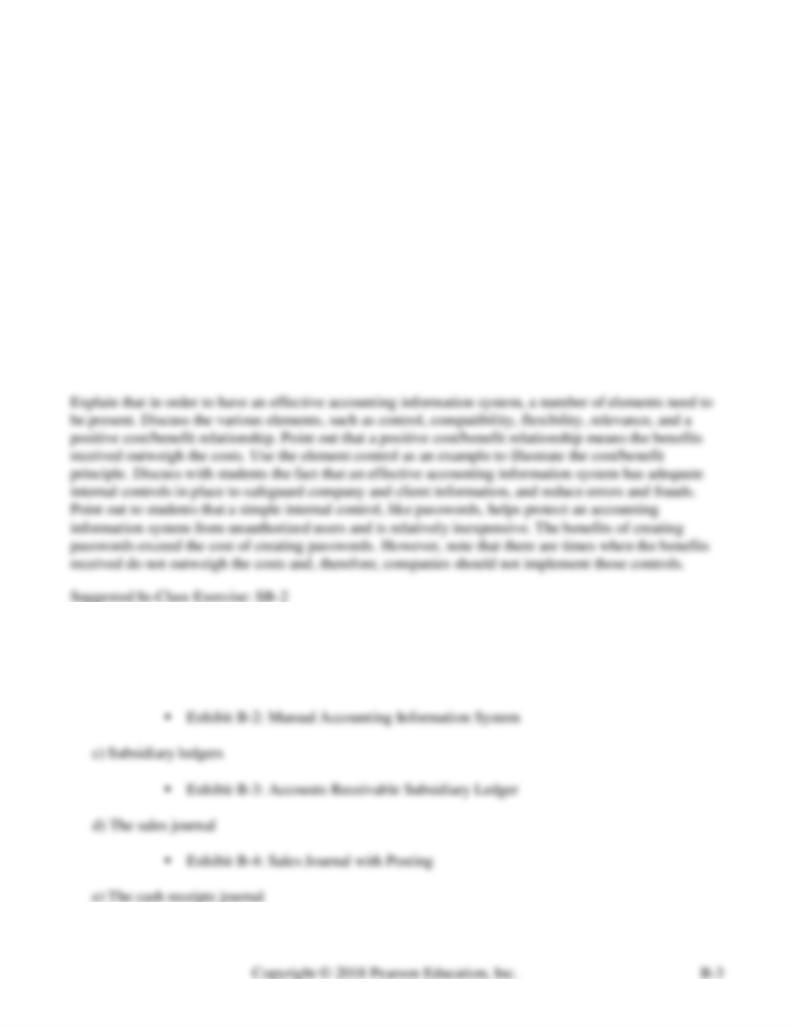
Appendix B: Teaching Outline
LO 1. Describe an effective accounting information system
a) Effective accounting information systems
▪ Exhibit B-1: Business Transactions and AIS Activities
b) Components of an accounting information system
Lecture Notes: Most students have heard of software packages such as QuickBooks and SAP but are not
familiar with what an accounting information system is. Start off the discussion by explaining that an
accounting information system is any type of system that houses a company’s accounting data, such as
QuickBooks, or a complex accounting software system like SAP. Point out that accounting information
systems are commonly referred to as AIS.
LO 2. Journalize and post sales and cash receipts in a manual accounting information system using
special journals and subsidiary ledgers
a) Special journals
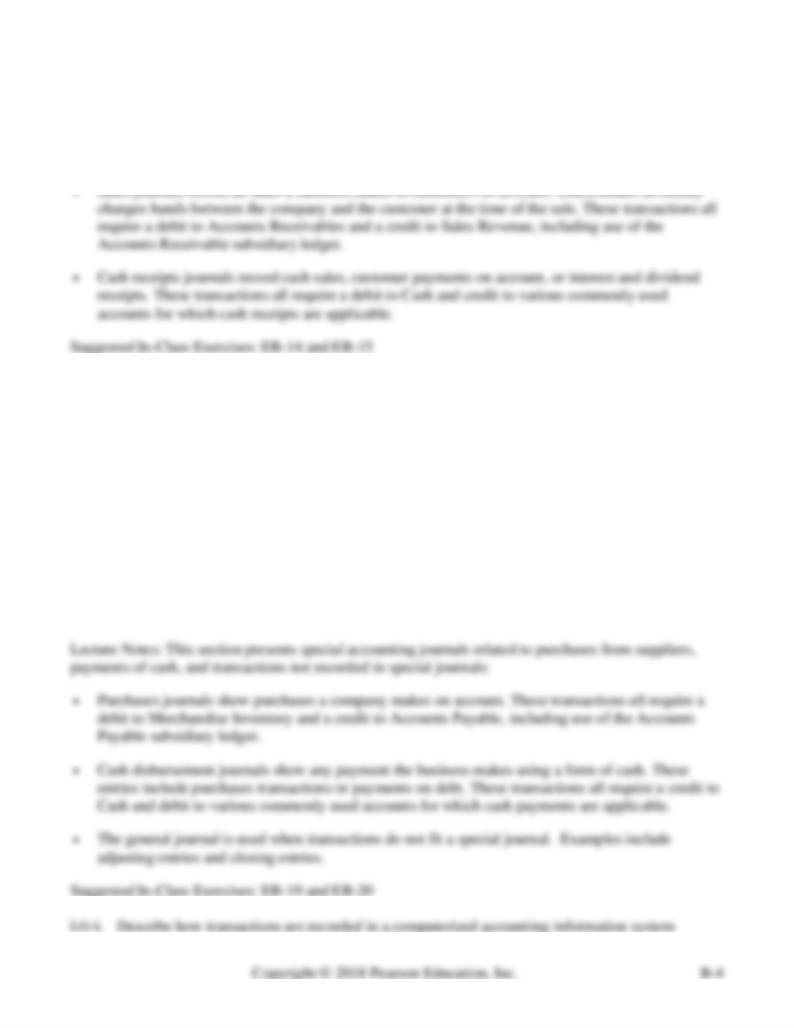
▪ Exhibit B-5: Cash Receipts Journal with Posting
Lecture Notes: If a company has many similar transactions, it uses special accounting journals. This
section presents special accounting journals related to sales to customers and receipts of cash:
LO 3. Journalize and post purchases, cash payments, and other transactions in a manual accounting
information system using special journals and subsidiary ledgers
a) The purchases journal
▪ Exhibit B-6: Purchases Journal with Posting
b) The cash payments journal
▪ Exhibit B-7: Cash Payments Journal with Posting
c) The general journal
▪ Exhibit B-8: Recording Transactions in Special Journals
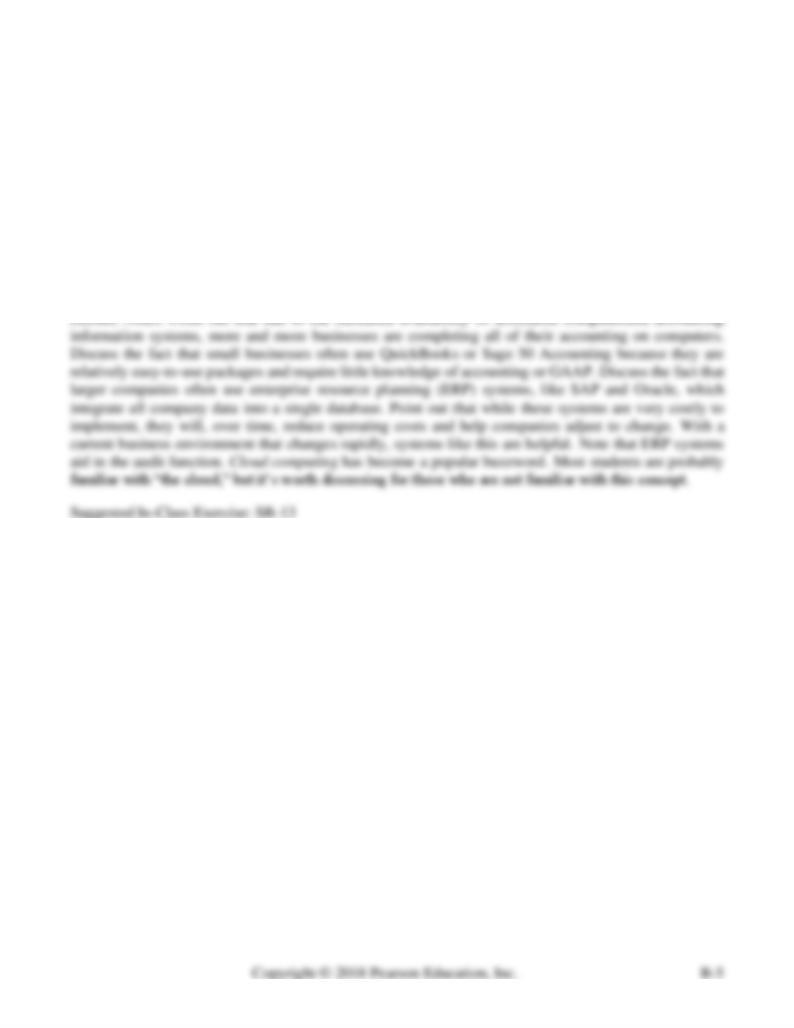
a) Entry-level software
b) Enterprise resource planning (ERP) systems
c) QuickBooks
▪ Exhibit B-9: Invoice
▪ Exhibit B-10: Bill
▪ Exhibit B-11: Income Statement
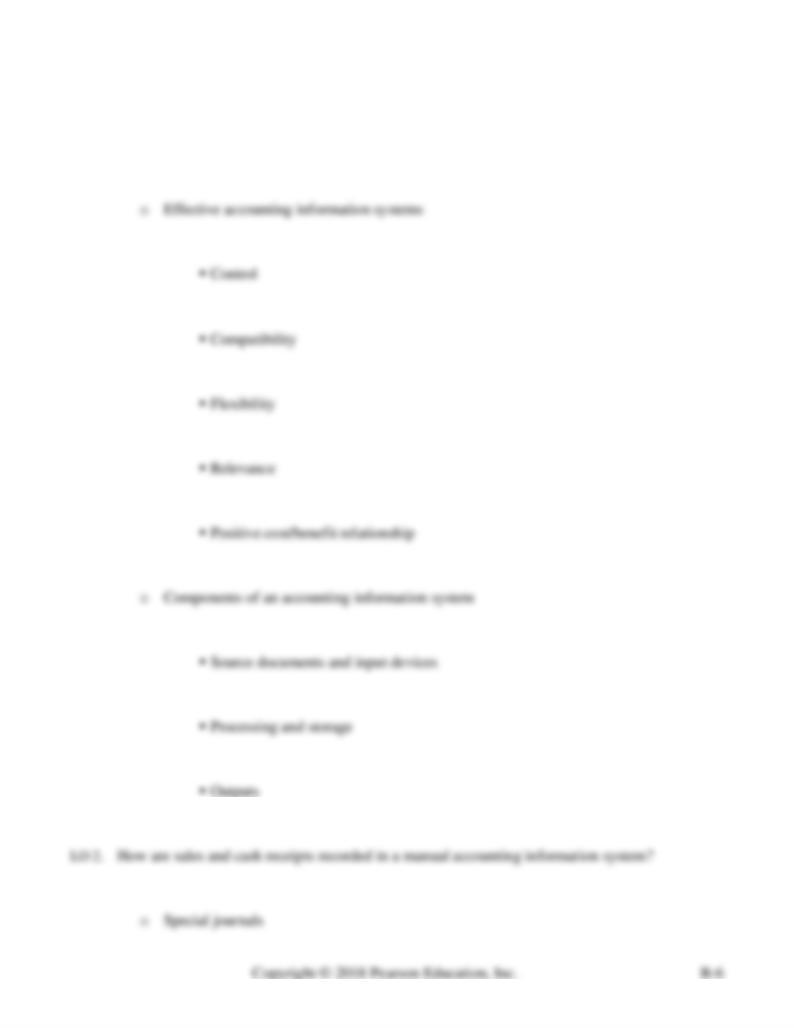
Appendix B: Handout for Student Notes
LO 1. What is an accounting information system?
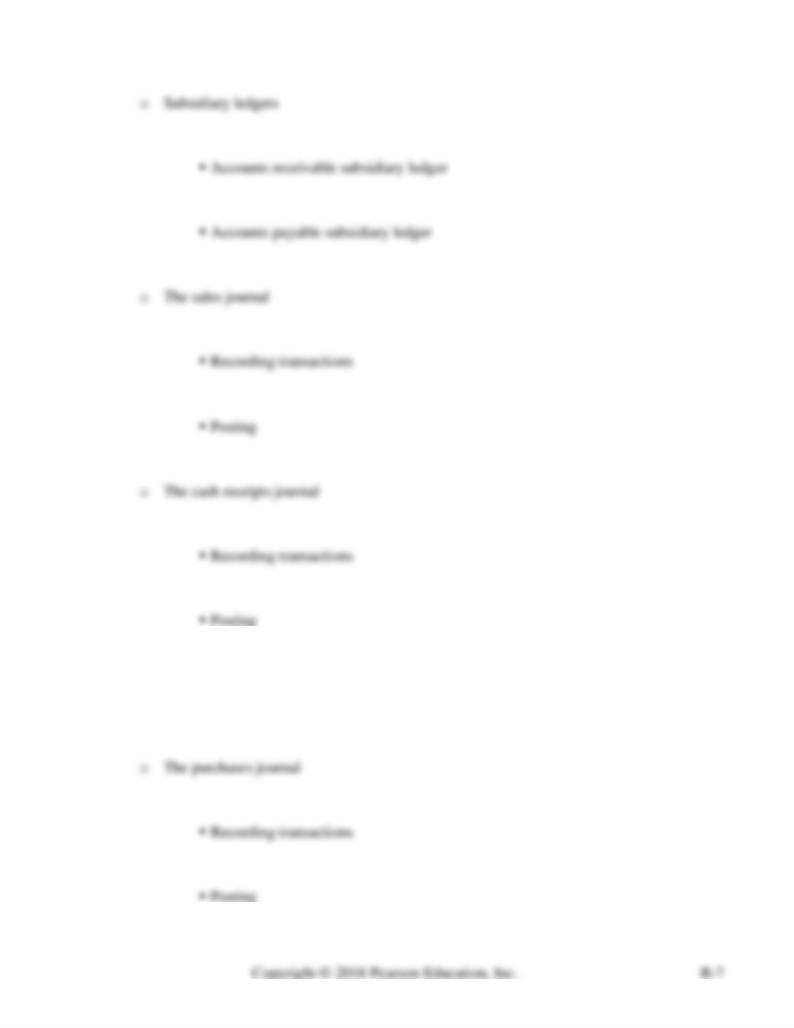
LO 3. How are purchases, cash payments, and other transactions recorded in a manual accounting
information system?
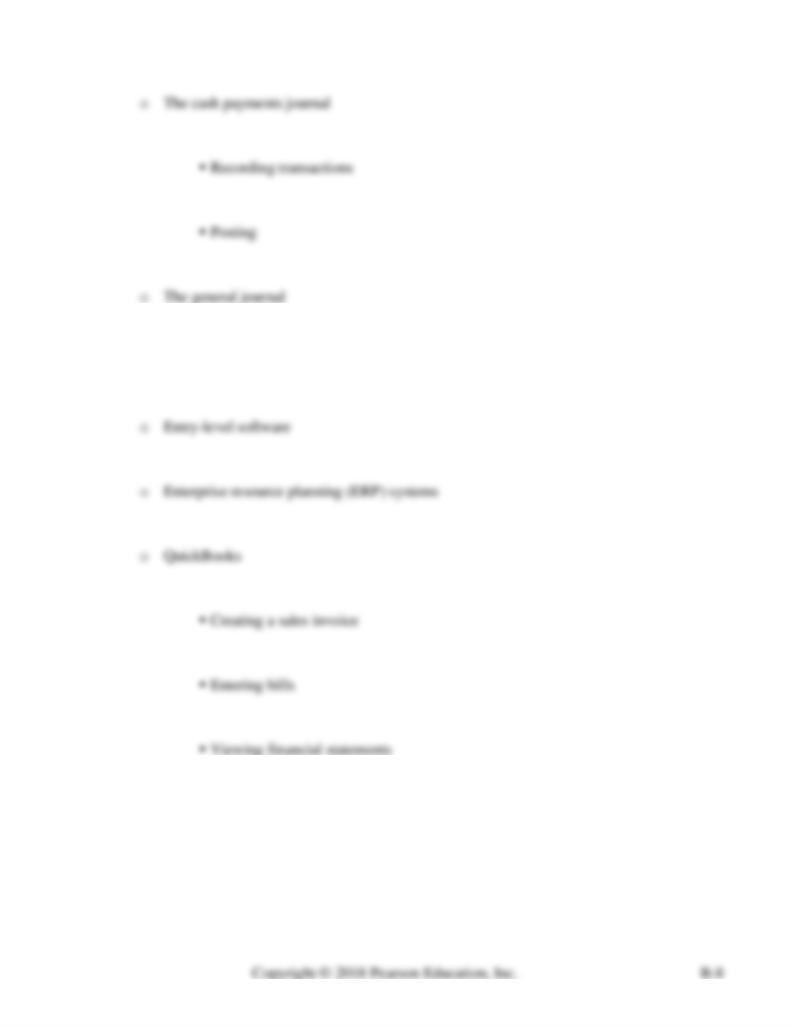
LO 4. How are transactions recorded in a computerized accounting information system?
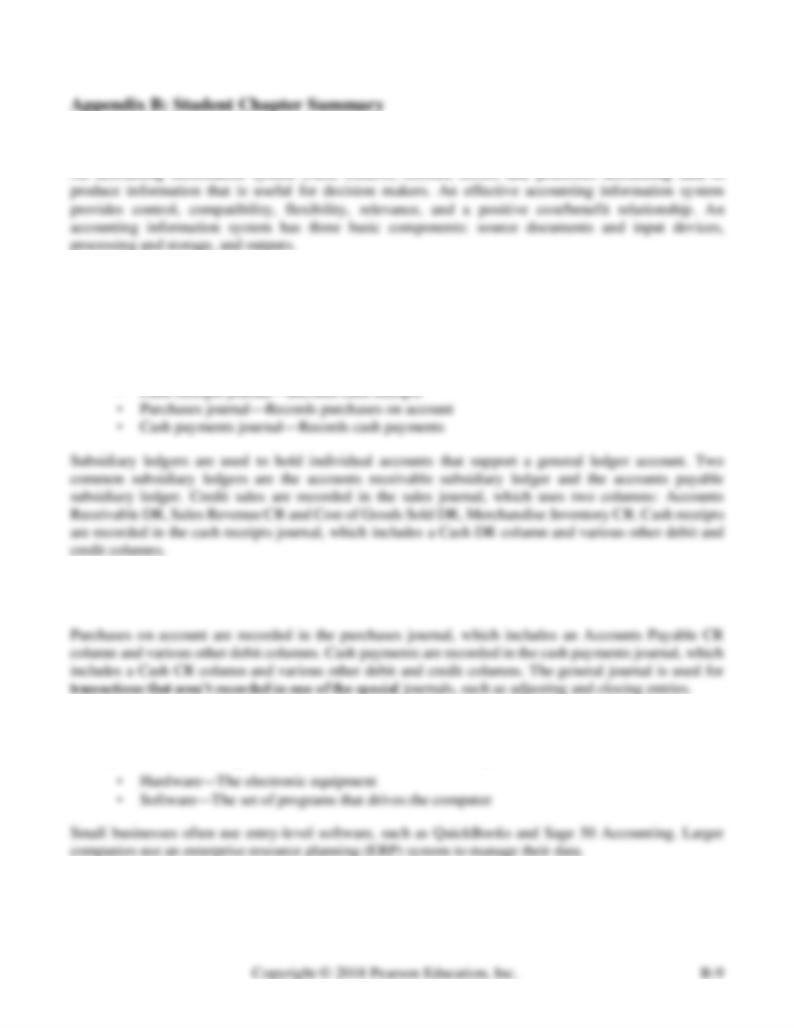
LO 1. Describe an effective accounting information system
LO 2. Journalize and post sales and cash receipts in a manual accounting information system using
special journals and subsidiary ledgers
In a manual system, businesses use special journals that are designed to record specific types of
transactions. The four special journals and their uses are:
• Sales journal—Records sales on account
LO 3. Journalize and post purchases, cash payments, and other transactions in a manual accounting
information system using special journals and subsidiary ledgers
LO 4. Describe how transactions are recorded in a computerized accounting information system
A computerized accounting information system has two basic components:

PB-26A, PB-29B
X
X
S – Short Exercises (Easy)
E – Exercises (Moderate)
P – Problems (Difficult)
Other End-of-Chapter Materials:

6. Which of the following characteristics of an effective accounting information system refers to

7. Consider the following special journals: the purchases journal and the sales journal. Which of these
